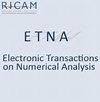数据为平稳遍历序列时广义绝对洛伦兹曲线的强定律
IF 0.8
4区 数学
Q3 MATHEMATICS, APPLIED
Electronic Transactions on Numerical Analysis
Pub Date : 2005-06-28
DOI:10.1090/S0002-9939-05-08096-2
引用次数: 6
摘要
我们考虑广义绝对洛伦兹曲线,作为特例,它包括经典的和广义的l -统计量,以及绝对的,换句话说,广义洛伦兹曲线。这些曲线基于随机变量的严格平稳和遍历序列。以前的大多数结果都是在附加的假设下得到的,即序列是弱伯努利的,换句话说,绝对规则的。我们还认为,从应用程序的角度来看,后一种假设可能是不可取的。本文章由计算机程序翻译,如有差异,请以英文原文为准。
Strong laws for generalized absolute Lorenz curves when data are stationary and ergodic sequences
We consider generalized absolute Lorenz curves that include, as special cases, classical and generalized L-statistics as well as absolute or, in other words, generalized Lorenz curves. The curves are based on strictly stationary and ergodie sequences of random variables. Most of the previous results were obtained under the additional assumption that the sequences are weakly Bernoullian or, in other words, absolutely regular. We also argue that the latter assumption can be undesirable from the applications point of view.
求助全文
通过发布文献求助,成功后即可免费获取论文全文。
去求助
来源期刊
CiteScore
2.10
自引率
7.70%
发文量
36
审稿时长
6 months
期刊介绍:
Electronic Transactions on Numerical Analysis (ETNA) is an electronic journal for the publication of significant new developments in numerical analysis and scientific computing. Papers of the highest quality that deal with the analysis of algorithms for the solution of continuous models and numerical linear algebra are appropriate for ETNA, as are papers of similar quality that discuss implementation and performance of such algorithms. New algorithms for current or new computer architectures are appropriate provided that they are numerically sound. However, the focus of the publication should be on the algorithm rather than on the architecture. The journal is published by the Kent State University Library in conjunction with the Institute of Computational Mathematics at Kent State University, and in cooperation with the Johann Radon Institute for Computational and Applied Mathematics of the Austrian Academy of Sciences (RICAM).

 求助内容:
求助内容: 应助结果提醒方式:
应助结果提醒方式:


